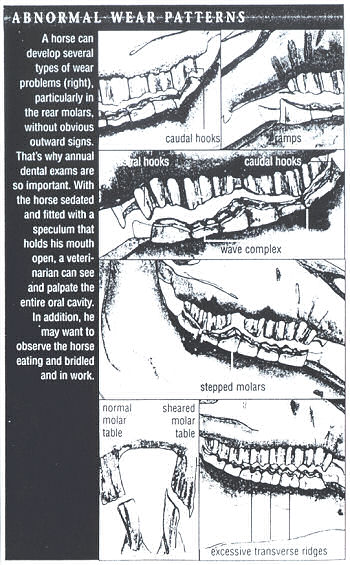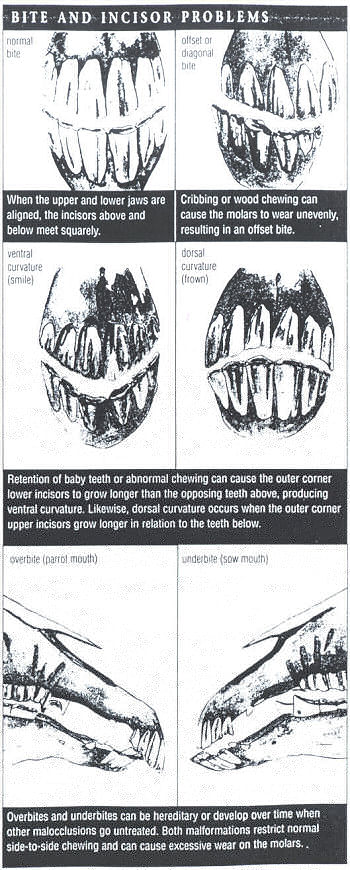Equine Dentistry - Patterns of Neglect
When horses’ mouths are left to wear as they will, a half dozen descriptively named abnor- malities are “sculpted” by imperfect chewing patterns.
- Sometimes sharp protrusions called hooks develop on the first or last cheek tooth when an overbite, underbite or other dental deformity causes an imperfect meeting of the top and bottom arcades. “Front hooks are commonly caused when the upper first cheek teeth stick out in front and the lower first teeth and the unopposed part of the upper tooth gets no wear,” says equine dental specialist B.A. Rucker, DVM, of Lebanon Virginia. “Over time, as the front hook gets longer, it thickens and pushes the [lower] jaw rearward, forcing the back cheek teeth out of contact.”
- Ramps are typically premolars with a surface that slopes like a ski jump. These abnor- malities are likely to change the horse’s bite over time by pulling the lower jaw forward or pushing it back. “Ramps may occur when the upper front premolar baby tooth is retained, preventing normal growth of the permanent premolar,” says Johnson. The opposing perma- nent tooth wears unevenly, developing a ramp. Both ramps and hooks can cut or scrape the tongue or cheek, especially when the horse is bitted.
- Wave mouth occurs when two or more teeth in the arcade are high, creating a series of ascending and declining grinding surfaces in a wavelike shape. This severely restricting dental abnormality can be the end stage of another neglected malocclusion, such as miss- ing teeth or hooks or ramps. Failure to properly shed baby teeth may initiate a wave mouth. “Wave mouth can start early, around age 6, and gradually gets worse,” says Johnson.
- A stepped molar has grown unopposed and thus unworn so that it juts above the rest of the arcade. A gap in the opposite molar lineup initiates the abnormality, and the overgrown tooth can seriously inhibit chewing motions. Step mouth can be corrected by filing or cut- ting the molar to the level of the rest of the tooth line.
- Shear mouth describes a dental configuration in which the molars’ grinding surfaces are worn at a 60 to 75 degree angle rather than at the normal 15.



